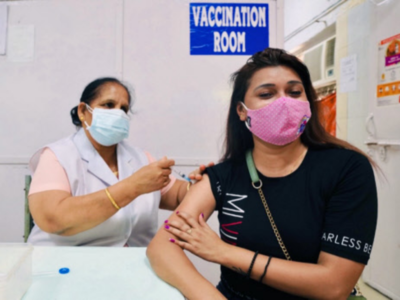Top Searches
- News
- City News
- delhi News
- Delhi news live: Covid positivity rate at 0.12% in city
Delhi news live: Covid positivity rate at 0.12% in city
The national capital recorded 93 fresh Covid-19 cases and four deaths due to the disease on Wednesday. The positivity rate stood at 0.12%, slightly up from 0.11% on Tuesday. The four new fatalities have pushed the death toll in the city to 25,005, according to the latest bulletin. Stay with TOI for all updatesRead Less

NDMC puts on hold plans to install 625 smart poles
New Delhi Municipal Council (NDMC)’s ambitious project to install 625 smart poles at prominent locations has been put on hold due to lack of technical and financial viability. These poles were supposed to have features like WiFi, panic button, high-density cameras, streetlights, touchscreen information panels and environment censors. Officials of the civic body said that the concessionaire didn’t agree to provide these services at 625 smart poles for free, which was one of the reasons the project couldn’t take off. “Also, no consensus was reached over who will bear the cost of repair work after laying down underground cables. We were also demanding 50% revenue generated through advertisements on the smart touch panels,” said an NDMC official.
Petrol at Rs 100.56/litre (an increase of Rs 0.35) today in Delhi, diesel at Rs 89.62/litre (an increase of Rs 0.09)

Lungs, liver, kidneys: Covid hurts them most
After the lungs, the liver and kidneys are the most affected in patients with severe Covid-19. This has been confirmed by a study conducted at AIIMS, which involved examining tissue samples taken from different organs of 37 patients who succumbed to the disease. The doctors found cardiac involvement was much lower than anticipated. “Further research is on to understand how the virus affects different organs. It will help us strategise how to treat patients and also throw light on potential post-Covid complications,” a senior doctor who participated in the study told TOI.
‘File status report on black fungus drug availability’
Delhi High Court on Wednesday asked the Centre to file a status report on availability and domestic production of a key drug, which is used to treat patients of black fungus. A bench of justices Vipin Sanghi and Jasmeet Singh further directed the central government to indicate the status of quantities of Liposomal Amphotericin B actually imported and the outstanding supplies, after it was informed by the Centre’s counsel that there are at present 17,000 active cases of the disease in the country. The high court also inquired if there is any shortage of the medicine currently, but was informed by the Centre that the number of patients has gone down. The bench, however, observed that enough stocks should be in place in preparation for a third wave of Covid and asked the government to deal with availability and supply with a sense of urgency.
Devise scientific formula for O2 storage: HC
There should be “no shortage or knee-jerk reaction” again on supply, storage and availability of liquid oxygen in the city, Delhi High Court cautioned on Wednesday. With an eye on a possible third wave and taking stock of the Covid-19 management after over a month, the court asked the Centre to inform it of the steps taken in ensuring a buffer stock of liquid medical oxygen (LMO) for the capital, even as the Aam Aadmi Party government claimed it currently had 419 metric tonnes as the buffer.
Genome lab to help analyse Covid variants
Chief minister Arvind Kejriwal inaugurated a SARS CoV2 genome sequencing facility at the genetic laboratory of Lok Nayak Hospital on Wednesday, the third such facility in north India. It will help the government identify and analyse all Covid-19 variants in preparation of future resurgences and also enable advance plans to avert infection and loss of human lives. Delhi has depended on the National Centre for Disease Control, a central government laboratory, to get the capital’s samples tested. The genome sequencing is important due to frequent emergence of variants of the novel coronavirus.
Panel suggests economic curbs if positivity rate > 5%
An expert committee formed by Delhi government to devise measures to contain and mitigate the spread of the virus, in case a third Covid-19 wave hits the capital, has suggested strict steps, including curbs on economic activities if the positivity rate crosses 5%. A graded response action plan has been made by formulating it on four colours. Each colour indicates a different level of the situation with various measures of containment and mitigation. While the Yellow Alert (level1) entails minimum economic restrictions, Red Alert (level 4) has the maximum curbs.
Delhi reports 93 fresh cases, 4 deaths; positivity rate 0.12%
The national capital recorded 93 fresh Covid-19 cases and four deaths due to the disease on Wednesday. The positivity rate stood at 0.12%, slightly up from 0.11% on Tuesday. The four new fatalities have pushed the death toll in the city to 25,005, according to the latest bulletin. On Tuesday, Delhi had reported 79 cases and four deaths. The infection rate, which had reached 36% in the last week of April, has come down to below 0.15% now. Delhi had been reeling under a brutal second wave of the pandemic that is sweeping the country, claiming a massive number of lives daily. Since April 19, both daily cases and single-day deaths count had been spiralling up, with over 28,000 cases and 277 deaths recorded on April 20; rising to 306 fatalities on April 22. On May 3, the city registered a record 448 deaths, according to the official data.
